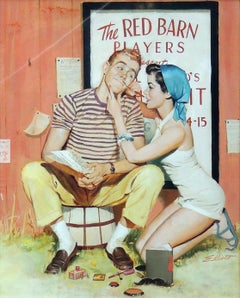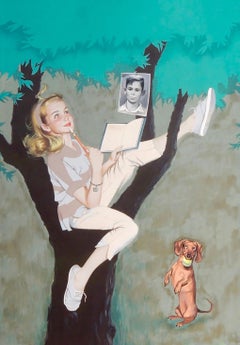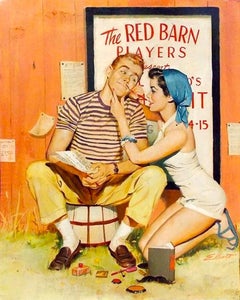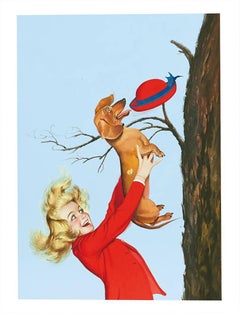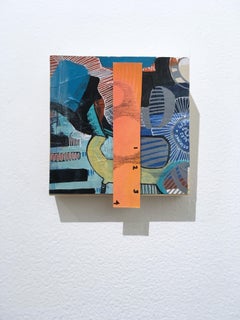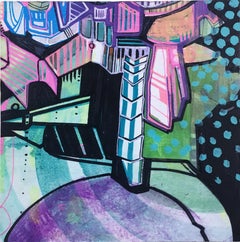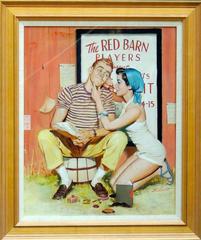Freeman Elliott Paintings
to
2
2
Overall Width
to
Overall Height
to
4
2
2
4
4
2
2
2
2
2
2
1
1
1
1
1
4
4
4
2
2
4
781
719
706
691
2
4
Artist: Freeman Elliott
American Weekly Magazine Cover
By Freeman Elliot
Located in Fort Washington, PA
Medium: Gouache and Watercolor on Paper
Signature: Signed Lower Right
Cover of American Weekly Magazine, June 20, 1954
Category
1950s Other Art Style Freeman Elliott Paintings
Materials
Paper, Watercolor, Gouache
Calling All Girls Magazine Cover
By Freeman Elliot
Located in Fort Washington, PA
Young girl writing in her diary while sitting on a tree branch looking at a picture of a young boy.
Cover art for the August/September 1961 issue of Calling All Girls magazine
Category
1960s Other Art Style Freeman Elliott Paintings
Materials
Gouache, Board, Pencil
"The Red Barn Players Summer Theater" - American Weekly Magazine Cover
By Freeman Elliot
Located in Fort Washington, PA
Couple putting on theatrical make-up for summer theatre
Cover of American Weekly Magazine, June 20, 1954
Dimensions: 19.75 x 16.00 in.
Medium: Gouache and Watercolor on Paper
Signa...
Category
1950s Freeman Elliott Paintings
Materials
Paper, Watercolor, Gouache
Calling All Girls
By Freeman Elliot
Located in Fort Washington, PA
Young girl holding her dog up to grab her hat on a tree branch.
Cover for the March 1962 issue of the Calling All Girls magazine
Category
1960s Other Art Style Freeman Elliott Paintings
Materials
Gouache, Board, Pencil
Related Items
My 80's Heart "Token 7" 2019, gouache, acrylic, graphite, panel, blue, orange
By Catherine Hart
Located in Jersey City, NJ
My 80's Heart "Token 7" 2019, gouache, acrylic, graphite, panel, blue, wood, orange
Category
2010s Contemporary Freeman Elliott Paintings
Materials
Acrylic, Gouache, Panel, Wood Panel, Illustration Board, Graphite
$120
H 5.5 in W 5 in D 1 in
My 80's Heart "Token 5" 2019, gouache, acrylic, graphite, panel, purple, green
By Catherine Hart
Located in Jersey City, NJ
My 80's Hart "Token 5" 2019, gouache, acrylic, graphite, panel, purple, green, blue
Category
2010s Contemporary Freeman Elliott Paintings
Materials
Acrylic, Gouache, Panel, Wood Panel, Graphite
Expressionist Figurative water color painting- Series Bath NO.1
Located in Beijing, CN
Artist Biography
Zhang Chunyang was born in 1975 in Changchun, Jilin. She earned her B.F.A at Jilin University of Arts in 1999, and studied at Central Acadamy of Fine Arts, Beijing ...
Category
2010s Expressionist Freeman Elliott Paintings
Materials
Watercolor, Gouache, Handmade Paper
$3,040
H 11.42 in W 14.18 in
Colorful Corals, Marine Diptych, Vivid Tones Reef, Acrylic Painting on Paper
Located in Barcelona, ES
Colorful Corals II is a vibrant diptych that captures the rich diversity and texture of underwater coral life. The artist uses confident lines and bold, layered colors—reds, blues, y...
Category
2010s Naturalistic Freeman Elliott Paintings
Materials
Paper, Acrylic, Gouache
Untitled
By Erez Yardeni
Located in London, GB
'Untitled' abstract composition, mixed media on soft board, Japanese ink, oil, pencil and gouache by Erez Yardeni (2018). Beautifully balanced, stunningly...
Category
2010s Abstract Freeman Elliott Paintings
Materials
Ink, Oil, Gouache, Board, Pencil
Untitled II
By Erez Yardeni
Located in London, GB
'Untitled II' abstract composition, mixed media on soft board, Japanese ink, oil, pencil and gouache by Erez Yardeni (2018). There is so much energy in th...
Category
2010s Abstract Freeman Elliott Paintings
Materials
Ink, Oil, Gouache, Board, Pencil
1910's Art Deco Erte Gouache Painting Original Hand Signed Rare French Costume
By Erté
Located in Buffalo, NY
A rare original signed Art Deco gouache on paper by Erte (Romain de Tirtoff)
.
This stunning theatrical costume design is signed Erte at the lower right.
The piece is 20 by 18 fram...
Category
1910s Art Deco Freeman Elliott Paintings
Materials
Gouache, Archival Paper, Pencil
$6,400 Sale Price
20% Off
H 20 in W 18 in
Original 70's Hand Painted Textile Design Gouache botanical Style on White Paper
Located in ALCOY/ALCOI, ES
Abstract Expressionist design. Sealed on the back with the design studio name and number . Ilegible signature
We offer a small number of these original illustration designs by this ...
Category
1970s Abstract Freeman Elliott Paintings
Materials
Paper, Gouache
$1,005
H 20.08 in W 34.65 in D 0.12 in
"Workers" Russian Constructivist 1920s Modern Social Realism Cubism Figurative
Located in New York, NY
"Workers" Russian Constructivist 1920s Modern Social Realism Cubism Figurative
VLADIMIR VASIL’EVICH LEBEDEV (1891-1967)
"Workers"
Gouache on paper
Monog...
Category
1920s Constructivist Freeman Elliott Paintings
Materials
Paper, Gouache
Dinosaur Me & Baby
By Erez Yardeni
Located in London, GB
'Dinosaur Me & Baby' abstract composition, mixed media on soft board, Japanese ink, oil, pencil and gouache by Erez Yardeni (2018). The scribblings of a c...
Category
2010s Abstract Freeman Elliott Paintings
Materials
Ink, Oil, Gouache, Board, Pencil
Yves in Tangier. From the Fashion series
By Manuel Santelices
Located in Miami Beach, FL
The artist has covered New York collections for over 16 years and has interviewed, as a journalist, several fashion designers and personalities for different publications. He loves t...
Category
21st Century and Contemporary Contemporary Freeman Elliott Paintings
Materials
Paper, Gouache, Acrylic
Original 70's Hand Painted Textile Design Gouache abstract morden on White Paper
Located in ALCOY/ALCOI, ES
Abstract Expressionist design. Sealed on the back with the design studio name and number . Ilegible signature
We offer a small number of these original illustration designs by this ...
Category
1970s Abstract Freeman Elliott Paintings
Materials
Paper, Gouache
$1,004
H 18.9 in W 34.65 in D 0.12 in
Previously Available Items
American Weekly Magazine Cover
By Freeman Elliot
Located in Fort Washington, PA
Couple putting on theatrical make-up for summer theatre
Cover of American Weekly Magazine, June 20, 1954
Signed lower right
Category
1950s Other Art Style Freeman Elliott Paintings
Materials
Gouache, Paper, Watercolor
Freeman Elliott paintings for sale on 1stDibs.
Find a wide variety of authentic Freeman Elliott paintings available for sale on 1stDibs. If you’re browsing the collection of paintings to introduce a pop of color in a neutral corner of your living room or bedroom, you can find work that includes elements of blue and other colors. You can also browse by medium to find art by Freeman Elliott in gouache, paint, watercolor and more. Not every interior allows for large Freeman Elliott paintings, so small editions measuring 9 inches across are available. Customers who are interested in this artist might also find the work of Samuel Hyde Harris, Theresa Bernstein, and Albert L. Dorne. Freeman Elliott paintings prices can differ depending upon medium, time period and other attributes. On 1stDibs, the price for these items starts at $3,900 and tops out at $18,000, while the average work can sell for $3,900.
